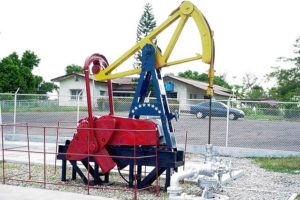Aeroplane manufacturers see a promising future ahead. The world’s fleet of aircraft will exceed 38,000 aircraft in the next 20 years while there are currently around 26,000 in service, according to data from the International Air Transport Association (IATA).
One might expect more planes in the sky to equate to an increase in pollution released into the atmosphere but the aviation sector is trying to show that this logic can be reversed and aims to halve its CO2 emissions by 2050, based on 2005 levels.
“The plan is to make sure that despite growth, emissions from the aviation sector do not go up,” Edward Smith, vice president of the General Aviation Manufacturers Association (GAMA), told Diálogo Chino. Powered by a type of kerosene, aeroplanes are responsible for 12% of emissions in the transport sector, whilst automobiles account for 74%. At present aviation accounts for 2% of global emissions.
Gradually, aeroplane manufacturers are embracing innovations to make their production lines cleaner whilst also seeking ways to cut costs, especially those related to fuel.
One of the latest innovations has just come from Brazilian manufacturer Embraer, which recently presented its new generation of commercial jets that consume 15-20% less fuel.
“This new family of jets (E-Jets E2) comes with much greater operating power, with better fuel economy, and also a lower operating cost. In other words, it is a more efficient aeroplane to meet the needs of various markets worldwide,” says Paulo Cesar Silva, president of Embraer Commercial Aviation.
China is one of Embraer’s biggest customers. In May last year, premier Li Keqiang signed a deal to purchase 22 planes and projections indicate that by 2034, China will add some 6300 new planes to its fleet. “China is an extremely important market for Embraer. We have been there for 15 years, we have 80% of the market in the up-to-100-seat jet segment,” Cesar Silva adds.
The Brazilian company opened a factory there in 2002, in a partnership with the Chinese AVIC 2, to produce 50-seat ERJ-145 planes. In 2012 it added the Legacy 650 plan.
Emerging country competition
A leader in manufacturing commercial jets with up to 130 seats, Embraer sees new competition from emerging countries like Russia and China. According to Smith, the new companies created in these two countries seem committed to a cleaner future.
“The Russians and Chinese are very involved In International Civil Aviation Organization (ICAO) discussions on CO2 emissions standards, the aircraft that they manufacture will also follow these new standards,” Smith says.
In early February, the ICAO, an agency within the United Nations, established rules for CO2 reductions. The treaty will be applied to aeroplanes built after 2023, but does not apply to those currently in use. The agreement states that aircraft that do not meet the recommendations will be banned by 2028.
The standards would have a greater impact on larger planes, since aircraft exceeding 60 tons account for 90% of the emissions from international aviation. To enter into force, the final text still has to pass through a special session with the 36 members of the ICAO council.
Technology and fuel
Besides changes in aerodynamics, such as a new wing design, Embraer sought more efficient engines to lessen the new jets’ emissions of pollutants into the atmosphere. Although the E2 family engines are larger, they go further on less fuel.
“More than 20 years of research and US$ 10 billion were invested,” says Greg L. Gernhardt of Pratt & Whitney, a jet engine manufacturer based in the United States. According to Gernhardt, design in past decades was motivated by attempts to cut fuel costs, since the price of oil was higher. “As the debate on climate change unfolded, manufacturers also began to be concerned about the environmental issue,” he states.
As for the use of alternative fuels, the technology still has to be mastered, says Frederico Curado, president of Embraer. “Now the issue is producing biojet fuel for use in planes. And gradually increasing this fuel mixture,” he says. Embraer and Boeing maintain a research center specifically geared toward developing aviation biofuels in São Paulo state, southeastern Brazil.
However, the current low oil prices could prevent the technology from taking off. “The aviation industry would like to believe that there is no connection, but low oil prices should affect the initial development of the production chain for sustainable fuels,” says Christopher Surgeon, of specialist UK-based publication GreenAir.
Andrew Pozniak, of the organisation Green Aviation, agrees: the low price of petroleum is a serious threat to the promising biofuel sector. “This would have a significant impact on the environment in the long run, since the aviation industry is doing everything possible to promote the use of sustainable fuels,” Pozniak said in an interview with Diálogo Chino.







